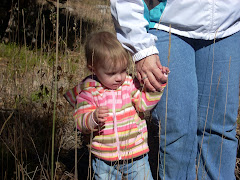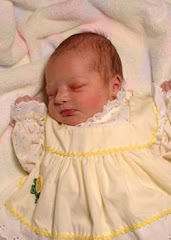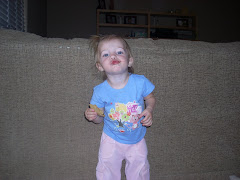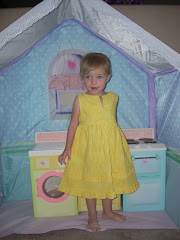SPEECH AND LANGUAGE ASSESSMENT
Name:
Emily
Date of Assessment:
2/27/09
Date of Birth:
4/12/06
Date of Report:
3/2/09
Age:
2 years 11 months
Diagnosis:
Expressive Language Disorder, Apraxia of Speech
Adjusted Age:
N/A
Reason for referral:
Emily has difficulties communicating with others effectively due to severe expressive language delay and articulation errors. After working with Emily since October 2008, evidence has indicated that apraxia may be hindering Emily’s progress in her intelligibility. The purpose of this assessment was to determine Emily’s current oral motor skills, and make recommendations as deemed necessary.
Sources of information:
File review, parent interview, therapist data, apraxia checklist.
Findings:
The apraxia checklist requires Emily to participate in a variety of motor tasks.
Gross Motor Coordination:
In this task, Emily was asked to clap while simultaneously counting to ten, marching, sitting then standing, running in place and jumping jacks. Even with maximum prompts, encouragement and models, Emily was unable or refused all tasks. She obtained a score of 0%.
Oral-Motor Coordination:
A variety of lip movements such as pucker/retracting lips, slow and fast kisses, hiding the top and then the bottom lip, slow/fast lip pops, and pressing the lips together were modeled for Emily. Although she did attempt these tasks, Emily was unable to perform any of these. Her pucker is open and her pressing of lips is weak an slightly open as well. Tongue movements such as sticking the tongue in and out 5 times, licking the top and then the bottom lip, slow and fast clicks, moving the tongue from corner to corner, and circling the lips clockwise and then counterclockwise with her tongue were all modeled for her. Of these tasks, Emily was only able to move her tongue from corner to corner. When circling her lips with her tongue, she is able to move her tongue along the bottom lip, however is unable to elevate her tongue and circle. When asked to touch her chin with her tongue, Emily is successful, however is unable to raise her tongue in attempts to touch her nose. Emily obtained a score of 10% on her oral-motor coordination tasks.
Sounds in Isolation:
In this task, Emily is asked to repeat each of the letters as well as the /sh/, /ch/ and /th/ sounds. Emily was only able to imitate the /sh/ sound successfully, obtaining a 3%.
C-V-C Words:
C-V-C words are given as verbal models and asked to be repeated. Emily did make attempts, however was unsuccessful in correct production. The results are as follows:
Bib - /buh/ Roar – (roared like a lion)
Pop - /puh/ Hot - /ah/
Mom - /bom/ Shush - /sh/
Wow - /buh/ Zoos - /zu/
Tight - /n/ Sis - /di/
Dad - /da/ Move - /mu/
Kick - /I/ Van - /va/
Gag – No response Fife - /mai/
Emily obtained a score of 0% on her C-V-C Words.
Multisyllabic Words:
Emily was instructed to repeat the following words: Hot dog, dinosaur, watermelon, hippopotamus, kindergarten teacher. Emily did attempt hot dog with /ah duh/, however was unable to imitate any of the other words. Her score on this task was 0%.
Repeating of sentences, expressions and words of increasing length were not attempted due to Emily’s lack of success at the other tasks.
Results of this assessment support a diagnosis of apraxia.
Summary and Recommendations:
It is felt at this time that Emily has shown minimal progress with her production of initial sounds, and she is not yet putting these sounds into whole words. Her speech production is inconsistent and her words are often times produced differently each time she says them. Emily is often seen groping in attempt to find the appropriate lip and tongue placement for sound production, even when in isolation. She will use signs with prompts, although tends to prefer to use word approximations as her mode of communication. She refuses to participate in oral-motor activities other than blowing bubbles; however her mother has been given some snack ideas with oral-motor activities attached. Emily’s success in blowing bubbles is inconsistent with her lip rounding and breath support.
Emily is a child that likes very much to be in control of her situation, and when a situation is presented in which a task is difficult for her, she will run from the room and use other avoidance tactics in order to regain control. She is a very bright girl and is able to follow directions, size concepts, spatial concepts (i.e. behind, in front of, next to, etc), and a variety of objects. Her receptive language skills are her strength at this time. Emily needs maximum prompting to increase her expressive language skills, thus becoming a better communicator. In addition, she requires extensive oral-motor therapy to increase her sound production and motor planning success. The focus of therapy for a child with apraxia, like Emily, should be on improving the planning, sequencing, and coordination of muscle movements for speech. In addition, it would be beneficial to have an occupational and physical therapist conduct a screening of Emily’s fine and gross motor skills.
Practice and repetition is key to Emily’s success. Often times, getting feedback from a number of senses, such as tactile "touch" cues and visual cues (e.g., watching herself in the mirror) as well as auditory feedback, is often helpful. With this multi-sensory approach, she will be better able to repeat syllables, words, sentences and longer utterances to improve muscle coordination and sequencing needed for speech.
Subscribe to:
Post Comments (Atom)








No comments:
Post a Comment